College Community Bids Farewell to Six Retiring Faculty Members

Clockwise from top left: Deb Bergstrand, Richard Eldridge, Sara Hiebert Burch ’79, Connie Hungerford, Brian Meunier, and Michael Mullan.
This spring, the Swarthmore community congratulates and bids farewell to six retiring faculty members, beloved professors representing the humanities, natural sciences, and social sciences. With a combined 213 years of service to Swarthmore, these teacher-scholars — including a former interim president — join the esteemed ranks of the College’s emeriti faculty.
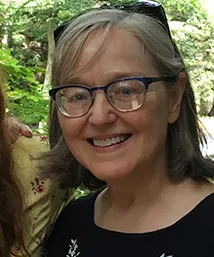
, a professor of mathematics & statistics, joined the faculty of Swarthmore in 1999 after 14 years at Williams College. A scholar of graph theory, Bergstrand received her bachelor’s degree from Allegheny College in 1975 and her Ph.D. from the University of Illinois at Chicago in 1980. She taught courses in all topics at the introductory and intermediate levels of math, along with Modern Algebra and Combinatorics, as well as for two years in the Summer Scholars Program. Bergstrand especially enjoyed teaching math to “non-math” folks and adult learners, such as a course in Mathematics in Nature though Lifelong Learning at Swarthmore.
But Bergstrand also recognized and emphasized the broader lessons that could be derived from math as part of a liberal arts education: “rigorous deductive reasoning, precise language, and articulating the fundamental qualities or issues in a complex problem allow us to give meaning and clarity to ideas and concepts that might otherwise seem impossible to comprehend.”
“I feel so lucky to have spent 21 years at Swarthmore,” she says. “It’s been a more rewarding professional experience than I could have imagined. The dedication of my students and wisdom and compassion of my many colleagues in these last few months only confirms what an extraordinary place this is.”
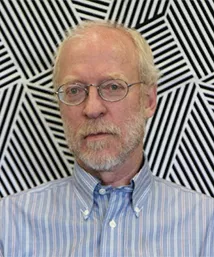
Charles and Harriett Cox McDowell Professor of Philosophy Richard Eldridge joined Swarthmore’s Philosophy Department in 1982 and served as chair from 1994 to 2008. With an interest in human expression, Eldridge taught courses that were often interdisciplinary in nature, cross-listed with comparative literature or interpretation theory. He is the author or editor of 12 books and more than 100 scholarly articles, many of which focus on aesthetics, Romanticism, and the philosophy of language.
Eldridge double majored in philosophy and history at Middlebury College, graduating in 1975, and received his Ph.D. from the University of Chicago in 1981. With financial support from Swarthmore, including a James A. Michener Faculty Fellowship in 2009–10, Eldridge furthered his studies through academic leaves that allowed him to live, work, and teach in Germany, California, and Australia. In retirement, Eldridge plans to remain professionally active by teaching courses at the University of Tennessee and continuing to write. He also looks forward to volunteering with community arts organizations and spending time with his 2-year-old granddaughter.
“Swarthmore provided talented, supportive colleagues, especially in my department when I was a callow youth, and later on in other departments, where I both took courses from and taught with generous faculty members who knew lots more than I did,” Eldridge says. “My thinking about philosophy and about life was fundamentally shaped in both settings. There was a steady supply of smart, energetic, and imaginative students, who demanded that I make philosophy somehow matter to them.”
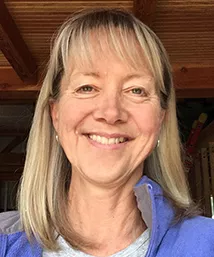
, the Edward Hicks Magill Professor of Mathematics and Natural Science, returned to Swarthmore in 1994 after spending two years here as a student in the 1970s; a study-abroad opportunity during her undergraduate career unexpectedly expanded to multiple years, leading Hiebert Burch to finish her bachelor’s degree at the University of St. Andrews in Scotland. An authority on hypometabolic states in small birds and mammals, Hiebert Burch taught courses on animal physiology and behavioral endocrinology at Swarthmore, and was also chosen as this year’s Baccalaureate speaker.
Hiebert Burch, who holds a zoology Ph.D. from the University of Washington, is the author or co-author of more than 30 publications, many with student collaborators; she also supervised research experiences for more than 40 Swarthmore students. Since retiring to San Juan Island, Wash., Hiebert Burch is continuing a field project on the gut microbiome of hummingbirds, working in collaboration with fellow Swarthmore biology professor Amy Vollmer. Hiebert Burch is currently living in a rustic timber-frame barn as she and husband Elliot build a sustainable, LEED-certified house.
“I am so grateful to have had my dream job as a faculty member at the College, and now am looking forward to my dream retirement,” Hiebert Burch says. “I extend my thanks and appreciation to students, colleagues and co-workers for everything they do to make Swarthmore such a wonderful place to work.”
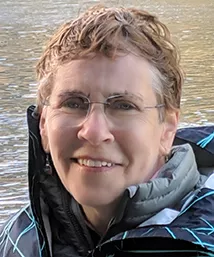
, the Mari S. Michener Professor of Art History, has been a fixture at the College for 45 years. An authority on 19th-century French painting, Hungerford joined the faculty in 1975 and has led classes and seminars on such topics as American and European modernism, the history of photography, and interpretations of Picasso. She has also served Swarthmore in significant administrative roles, including as provost from 2001 to 2011 and as interim president from 2014 to 2015. At a virtual reception today, President Valerie Smith announced that the Old Tarble Drawing Room — the location of the newly restored Hicks Murals — would be named in her honor.
Hungerford holds a bachelor’s degree from Wellesley College and a master’s and Ph.D. from the University of California, Berkeley. The author of Ernest Meissonier: Master in His Genre (Cambridge University Press, 1999), Hungerford also curated a retrospective of the French painter’s work for the Musée des Beaux-Arts in Lyon, France. She has been the recipient of numerous grants and awards from organizations such as the American Council of Learned Societies, the American Philosophical Society, the American Association of University Women, and the National Endowment for the Humanities.
Reflecting on her years at Swarthmore, Hungerford singles out the extraordinary community of faculty and students, “passionate to examine received knowledge and to create fresh understandings,” she says. “It’s a very special privilege.”
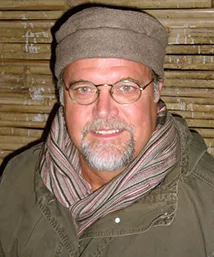
Professor of Studio Art Brian Meunier, a sculptor whose global travels and sabbaticals have greatly influenced his artwork and teaching, has been a member of Swarthmore’s faculty since 1979. With a BFA from the University of Massachusetts, Amherst, and an MFA from Tyler School of Art, Meunier creates folk art-inspired pieces that can be found in the Museum of American Art at the Pennsylvania Academy in Philadelphia, the Joseph Pulitzer Collection, and the Pennsylvania Convention Center, as well as in numerous private collections.
At Swarthmore, Meunier was the recipient of multiple awards that allowed him to pursue his research, including the Mellon Faculty Fellowship (1982), the Blanchard Faculty Fellowship (1986), the Eugene M. Lang Faculty Fellowship (1998), and the James A. Michener Faculty Fellowship (2002). In addition to his sculpture work, Meunier is also an author of children’s books. Collaborating with his wife, painter Perky Edgerton, Meunier wrote Bravo, Tavo! and Pipiolo and the Roof Dogs, based on their experience living in Oaxaca, Mexico.
Last year, Meunier and his wife purchased his in-laws’ old 6-acre farm in the northern Berkshires of Massachusetts, where the couple are tackling renovations in retirement. “I am building a studio in one of the barns, where I intend to continue my exploration in sculptures during the warmer months, and to write — children’s stories or otherwise — during the cold months,” Meunier says. “Additionally, once we can travel again, we hope to spend the depths of the winter and early mud seasons living in a country in Central America.”

Michael Mullan, a professor of physical education and sociology, fully retires from Swarthmore this spring after stepping down as men’s tennis coach in 2018. One of the winningest coaches in college tennis, Mullan came to Swarthmore in 1978 and led the Garnet to 27 appearances in the NCAA Division III National Championships, including national titles in 1981, 1985, and 1990. He also fostered success in the classroom, leading sociology courses exploring sport and society, revolution and war, and ethnic diasporas, in addition to teaching P.E. classes.
A 1971 graduate of the University of California, Berkeley, where he competed in both singles and doubles, Mullan received a master’s in physical education from Temple University in 1987 and a Ph.D. in sociology from the University of Delaware in 1993. Inspired and motivated by his faculty colleagues, Mullan earned an “accidental” history Ph.D. from Temple in 2009 after taking a few courses during a sabbatical. His first book, Nation, Culture, and the Rise of a Gaelic Public Sphere: The Philadelphia Irish, is set to be published by Rutgers University Press in January.
In retirement, Mullan plans to stay focused on research and writing, while also assisting in the athletic study center this fall at Seattle University. “While I never intended to spend a whole working lifetime at Swarthmore College,” he says, “I, wisely, stayed. Our college is one of the most inspiring institutions of learning anywhere, and I am glad to have contributed my small part to its history.”



